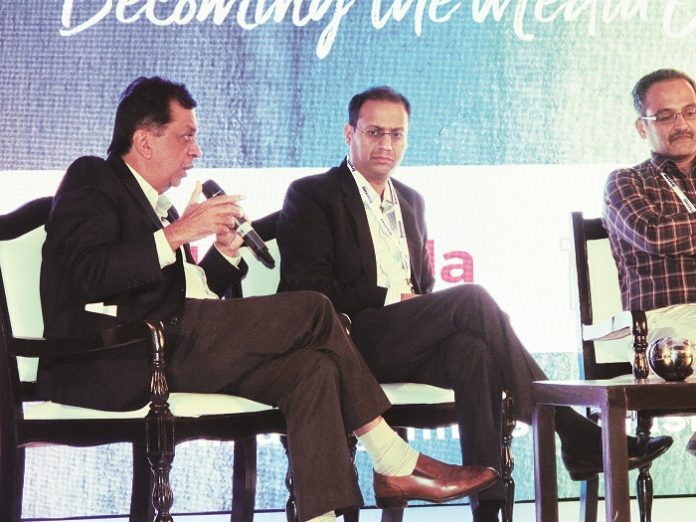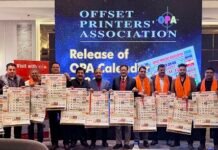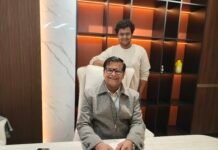
At the INMA Conference, it became clear that legacy media that are more immediately threatened by the future or touching low growth in the 3 to 5% range, such as the major English dailies in the country, are clearly adapting faster. One could see, at least from a couple of presentations made at the conference, that the largest news group in the country and the largest English daily, The Times of India, has been the most active in creating many internet properties and platforms, and has also tried many of the recipes to bring the future closer.
However, many of the language dailies, especially the Hindi dailies operating from the northern part of the country, still seem confident about the headroom that they see for print circulation growth. My view is that they are unfortunately not as intensely evolving or adapting to the future as they may need to, in order to survive. Nevertheless, the Indian news organizations are changing and maturing, and so is the technology that could help them transform themselves into multi-channel content platforms—the future of analytics and real-time content and response beckons, and to a large extent the conference brings together some of the best talent in the industry.
The fairly large audience from more than 20 news and content organizations and platforms consisted of about 175 brand and project managers, digital and marketing officers, senior editorial personnel and a number of CEOs. News organizations, analysts and platforms from Bangladesh, Fiji, Singapore, Indonesia and China are also taking part.
D Shivakumar, chief executive officer of Pepsico India, set the conference in motion with key insights on what new organizations must face in terms of external realities and their own adaptability. Shivakumar’s presentation highlighted the five imperatives to create the news organization of the future—Trust, Talent, Technology, Teamwork, and Time. He wisely pointed out that while trust, talent, teamwork and time will cost more and come at a premium, the cost of technology is in fact declining. According to him, “The premium on holding on to talent will be so great that that they must be treated as volunteers whose interests coincide with those of a project or organization for a given period of time.” He advocated small teams that are fluid—multi-generational and with diverse backgrounds—ready to compromise and to play any position. He cited the example of Johan Cruyff’s invention of total football where constant movement and passing means that even a defender can come to the front and score.
Sharing his insights on technology, Shivakumar said that technology will continue to make everything context based while helping the individual integrate the environment, which is full of noise—there is too much data and too little insight. There were several other excellent presentations and panel discussions on the first day that addressed the key issue of evolution and adaptation. It was telling that several of the senior leaders in news organizations were frank about the difficulty of change. Rajiv Verma, chief executive officer of HT Media group admitted, “As an industry we have failed our clients in terms of response…. We do not know our customers.” He added, “We are bringing very little value addition to our advertisers and the only way to overcome this by a legacy media company is by embedding analytics or data in our platforms.”
The new world may be flat but we still need soothsayers
The INMA South Asia Conference was supposed to be, broadly, about the future of newspapers and Big Data. In the main it was about trying to change the mindset of legacy Indian news organizations of which the largest cannot but be aware of the crisis they are facing every day in terms of declining circulation and a more fragmented advertising market looking for better and more quantifiable returns.
Sinha spoke of the necessity of finding new principles for leveraging ‘transient competitive advantage’ where every advantage is potentially temporary; healthy disengagement may be a preferable alternative to unremitting persistence; rather than defending advantage, it may be better to focus on seizing opportunities.
It must be said, after listening for two days to some very insightful presentations by media analysts and consultants, that the larger legacy print organizations are getting it. One sign was the presence of professional CEOs from the major dailies, some of whom also took part in the panels and presentations. However, although analytical insights on the basis of consultants’ research are there, it was widely admitted that the right kind of data, even Big Data, is missing. Even the revamped newspaper industry surveys are eight months away.
It is clear that the advertising industry has not been waiting around for the newspapers to come up with better data and have resorted to several methods for probing market trends and reader and customer feedback to generate their own decision making data. As was pointed out by several speakers that although there may seem to be an abundance of data, there is still a shortage of analysis and insight.
The end of competitive advantage vs. the advantages of speaking out
Partha Sinha’s presentation, ‘The End of Competitive Advantage as We Knew It,’ humorously highlighted the end of earlier and somewhat sacred business school propositions. The ‘sustainable competitive advantage’ of legacy news organization (and in my own view even many democratic institutions of state) has been wiped out by new media and social media where presidents and prime ministers speak directly to their followers.
Sinha spoke of the necessity of finding new principles for leveraging ‘transient competitive advantage’ where every advantage is potentially temporary; healthy disengagement may be a preferable alternative to unremitting persistence; rather than defending advantage, it may be better to focus on seizing opportunities; that the business school notion of strategy is itself overrated in an environment where competitive advantage and innovation are themselves fluid ideas; and, lastly, while businesses need to be reinvented for competitive advantage, there can be no sense of entitlement for legacy organizations.
In an answer to a question after his presentation of the end of competitive advantage as we knew it, Sinha acknowledged that the Indian news media may still have several advantages that it is perhaps not leveraging, such as freedom of expression and even the unfettered right to do business on most platforms if not all (if one takes government restrictions on broadcasting news on radio as as example).
Ironically, it was Arnab Goswami who in his talk on ‘Is Absolute Neutrality Possible’ demonstrated the opportunity still afforded to a media that dares to have a viewpoint and a perspective. Goswami was categorical in his dismissal of neutrality as a form of passivity. He was clear that when news has become interactive, it is necessary to take a position, “Print tried to be neutral and it lost the plot…. Now the new normal is the battle between right and wrong and black and white.” Openly admitting his political stance on some issues, while advocating neutrality in respect to political parties he said, “Facts are sacred, opinion is the future; and, neutrality was never there.”
It is clear that the advertising industry has not been waiting around for the newspapers to come up with better data and have resorted to several methods for probing market trends and reader and customer feedback to generate their own decision making data.
















